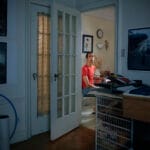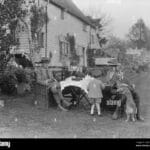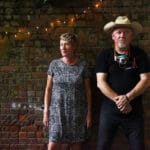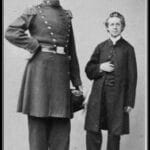Cecil Beaton, a name synonymous with 20th-century glamour and artistry, left an indelible mark on the worlds of photography, fashion, and stage design. From intimate royal portraits to iconic fashion shoots, Beaton’s work captured the spirit of his time. This article explores the fascinating life and enduring legacy of this creative powerhouse.
The Diverse World of Cecil Beaton
Born in 1904, Cecil Beaton’s artistic journey began early, probably fueled by an innate passion for capturing beauty. His initial fascination with photography quickly blossomed into a lifelong pursuit of artistic expression across multiple disciplines. His photography wasn’t simply documentary; it was a form of artistic creation, often imbued with a signature glamour and sophistication. He masterfully used light, shadow, and composition, developing innovative techniques that revolutionized fashion and portrait photography. Carol Shepp, a renowned artist in her own right, shares a similar dedication to visual storytelling through her vibrant and meticulously crafted paintings.
Beyond the lens, Beaton explored various creative avenues. His meticulously kept diaries offer witty observations and candid reflections, providing a glimpse into the mind of a complex and compelling individual. He also ventured into costume and set design for theater and film, winning two Academy Awards and four Tony Awards, solidifying his status as a visionary in the entertainment industry. His literary contributions, particularly “The Book of Beauty,” showcase both his stunning photography and insightful writing. Chamberlain Quince, though a figure from a different era, also intrigues us with his multifaceted life, shrouded in mystery and speculation.
Beaton’s personal life, a tapestry of influential connections and relationships, likely shaped his artistic vision. His interactions with royalty, celebrities, and artists provided him with unique perspectives and experiences that undoubtedly informed his work.
Beaton and the British Monarchy: A Photographic Reign
Cecil Beaton’s name is inextricably linked with iconic images of Queen Elizabeth II. He wasn’t merely a photographer of the Queen; he chronicled her reign, crafting a visual narrative that shaped public perception of the monarchy. His association with the Royal Family began in 1939 when he photographed Queen Elizabeth (the Queen Mother), a career highlight that projected stability at the dawn of World War II. This continued in 1942 with a portrait of 16-year-old Princess Elizabeth, marking the start of a decades-long relationship. In 1948, at the Queen Mother’s suggestion, Beaton captured Princess Elizabeth with her newborn son, Prince Charles. This focus on family continued with photographs of Princess Anne’s birth in 1950, Prince Andrew’s in 1960, and Prince Edward’s in 1964.
Beaton’s photographs of the Queen transcended mere documentation. They captured the evolution of her public image, from young princess to reigning monarch. His intimate access allowed him to portray the Royal Family in relaxed settings, humanizing them and fostering a sense of connection with the public. The 1953 coronation photographs, captured for Vogue, stand as a historic record of a pivotal moment. His later royal sittings, including one in 1968, further cemented his role as the visual chronicler of the monarchy.
The Queen Mother, Beaton’s favorite royal sitter, significantly influenced his royal photography. Her preferences likely shaped his artistic choices, contributing to the enduring aesthetic of his royal portraits. Claudia Acott Williams, curator of Kensington Palace and author of Cecil Beaton: The Royal Portraits, emphasizes the importance of Beaton’s work in creating a “collective vision” of the Royal Family, balancing their roles as figures of state and as a family. Ongoing research continues to explore the impact of Beaton’s photographs, particularly during periods of social and political change, suggesting that they projected an image of stability and continuity, essential during a time of transformation for Britain.
Unmasking the Man: Intriguing Facts about Cecil Beaton
Cecil Beaton was more than just a photographer; he was a multi-talented individual whose creativity extended across various artistic domains. This “Renaissance man” had a knack for capturing the essence of a person, a moment, a feeling, translating it into visually stunning works of art. His detailed diaries offer a captivating window into the world of high society and his own personal experiences, further enriching our understanding of this complex figure.
Born on January 14, 1904, in Hampstead, London, Beaton’s artistic inclinations emerged early. He attended Heath Mount School (where he was bullied by Evelyn Waugh) and St. Cyprian’s School, which nurtured his burgeoning talent. This early recognition encouraged him to pursue his creative passions, ultimately leading to a remarkable career that spanned photography, writing, design, and more.
Beaton’s connection with the British Royal Family, beginning with his appointment as official court photographer in 1937, is a testament to his skill and artistry. His photographs of the Royal Family, both formal and informal, offer a unique perspective on their lives and roles. He photographed royalty and celebrities alike, from Andy Warhol to Audrey Hepburn, demonstrating his versatility and ability to connect with individuals from diverse backgrounds. He also made significant contributions to the world of film and theatre, winning two Academy Awards for Costume Design ( Gigi and My Fair Lady) and an Academy Award for Art Direction ( My Fair Lady). His four Tony Awards are further evidence of his theatrical prowess.
Beaton’s personal style, known for flamboyant suits and extravagant hats, mirrored his vibrant artistic personality. This distinctive style became a hallmark of his public image. His published diaries, summarized in Self Portrait with Friends: The Selected Diaries of Cecil Beaton, 1926–1974 (1979), offer candid insights into his life and the cultural landscape he inhabited. Knighted in 1972, Beaton gave his last public interview in January 1980 on BBC’s Desert Island Discs. His extensive archives, held by institutions like the Victoria & Albert Museum, Imperial War Museum, and Sotheby’s Cecil Beaton Studio Archive in London, provide a rich resource for researchers and admirers of his work.
Beaton’s Photographic Masterpieces: A Legacy in Images
Cecil Beaton’s vast photographic oeuvre includes images that have become synonymous with 20th-century iconography. His ability to capture the spirit of his subjects, whether they were Hollywood stars, members of high society, or victims of war, is a testament to his unique artistic vision. His photographs are characterized by a certain “Beaton look,” a blend of technical mastery, artistic composition, and an uncanny ability to connect with his subjects.
His portraiture is particularly celebrated, capturing the personalities of cultural icons like Marlene Dietrich, Katherine Hepburn, and Salvador Dali. The 1936 portrait of Marlene Dietrich, with her smoky gaze, exemplifies his ability to evoke allure. In the same year, his portrait of Salvador Dali and Gala captures the surrealist spirit of the artistic couple. His 1930s portraits of Katherine Hepburn, alongside his candid diary entries about her, reveal a complex relationship between artist and subject. His photographs of Twiggy, taken in his London home in the 1960s, defined the era’s mod aesthetic.
Beaton’s war photography offers a starkly different perspective, documenting the devastation of the Blitz and the human cost of conflict. Images like the one of three-year-old Blitz victim Eileen Dunne capture the profound suffering of the time. Yet, even amidst conflict, Beaton’s lens found moments of humanity, as seen in the playful portrait of Wing Commander Neil.
His royal photography, spanning six decades, represents a significant portion of his legacy. From the coronation of Queen Elizabeth II to informal portraits of the Royal Family, his images offer a glimpse into a world of tradition and privilege. It is important to remember that the Queen herself recommended Beaton to the Ministry of Information, highlighting the trust and respect he earned.
His work in fashion photography, featuring models like Twiggy, helped define the look of the 1960s. This foray into fashion complemented his work in costume and set design for film and theatre, showcasing his versatility and influence across different visual mediums. ongoing research continues to explore the nuances of his vast collection, with evolving interpretations of his most significant works. Scholars are continually uncovering new insights into the complexities of his art.
Beaton’s legacy is not confined to a single image; it resides in the breadth and depth of his artistic output. His photographs, diaries, and designs offer a multifaceted perspective on the 20th century, capturing its glamour, its tragedies, and its enduring spirit.
- Unlock Elemental 2 Secrets: Actionable Insights Now - April 2, 2025
- Lot’s Wife’s Name: Unveiling the Mystery of Sodom’s Fall - April 2, 2025
- Photocell Sensors: A Complete Guide for Selection and Implementation - April 2, 2025
















2 thoughts on “Cecil Walter Hardy Beaton: The Enduring Legacy of a Multifaceted Artist”
Comments are closed.